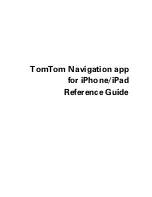
330
ExtremeWare 7.2e Installation and User Guide
Troubleshooting
If you are connecting to a third-party device and have checked that the VLAN IDs are the same, the
Ethertype field used to identify packets as 802.1Q packets may differ between the devices. The default
value used by the switch is 8100.
VLANs, IP Addresses and default routes:
The system can have an IP address for each configured VLAN. It is necessary to have an IP address
associated with a VLAN if you intend to manage (Telnet, SNMP, ping) through that VLAN or route IP
traffic. You can also configure multiple default routes for the system. The system first tries the default
route with the lowest cost metric.
STP
You have connected an endstation directly to the switch and the endstation fails to boot correctly:
The switch has STP enabled, and the endstation is booting before the STP initialization process is
complete. Specify that STP has been disabled for that VLAN, or turn off STP for the switch ports of the
endstation and devices to which it is attempting to connect, and then reboot the endstation.
The switch keeps aging out endstation entries in the switch Forwarding Database (FDB):
Reduce the number of topology changes by disabling STP on those systems that do not use redundant
paths.
Specify that the endstation entries are static or permanent.
Debug Tracing/Debug Mode
In ExtremeWare version 7.1.0, the Event Management System (EMS) facility was added to ExtremeWare.
EMS provides a standardized way to filter and store messages generated by the switch. Many of the
systems in ExtremeWare are moving into EMS. As a system is converted to EMS, the corresponding
debug trace command associated with that system is removed. With EMS, you must enable debug
mode to display debug information. To enable or disable debug mode for EMS, use the following
commands:
enable log debug-mode
disable log debug-mode
Once debug mode is enabled, you can configure EMS to capture specific debug information from the
switch. Details of EMS can be found in Chapter 8, “Status Monitoring and Statistics” on page 123.
For the systems not yet converted to EMS, ExtremeWare includes a debug tracing facility for the switch.
The
show debug-trace
command can be applied to one or all VLANs, as follows:
show debug-trace {vlan <vlan name>}
The
debug
commands should only be used under the guidance of Extreme Networks technical
personnel.
To reset all debug-tracing to the default level, use the following command:
clear debug-trace
Summary of Contents for ExtremeWare 7.2e
Page 14: ...14 ExtremeWare 7 2 0 Software User Guide Contents...
Page 18: ...18 ExtremeWare 7 2e Installation and User Guide Preface...
Page 80: ...80 ExtremeWare 7 2e Installation and User Guide Accessing the Switch...
Page 102: ...102 ExtremeWare 7 2e Installation and User Guide Virtual LANs VLANs...
Page 108: ...108 ExtremeWare 7 2e Installation and User Guide Forwarding Database FDB...
Page 180: ...180 ExtremeWare 7 2e Installation and User Guide Security...
Page 194: ...194 ExtremeWare 7 2e Installation and User Guide Ethernet Automatic Protection Switching...
Page 218: ...218 ExtremeWare 7 2e Installation and User Guide Spanning Tree Protocol STP...
Page 248: ...248 ExtremeWare 7 2e Installation and User Guide Interior Gateway Protocols...
Page 256: ...256 ExtremeWare 7 2e Installation and User Guide IP Multicast Routing...
Page 308: ...308 ExtremeWare 7 2e Installation and User Guide Using ExtremeWare Vista on the Summit 400...
Page 316: ...316 ExtremeWare 7 2e Installation and User Guide Technical Specifications...
Page 324: ...324 ExtremeWare 7 2e Installation and User Guide Software Upgrade and Boot Options...















































